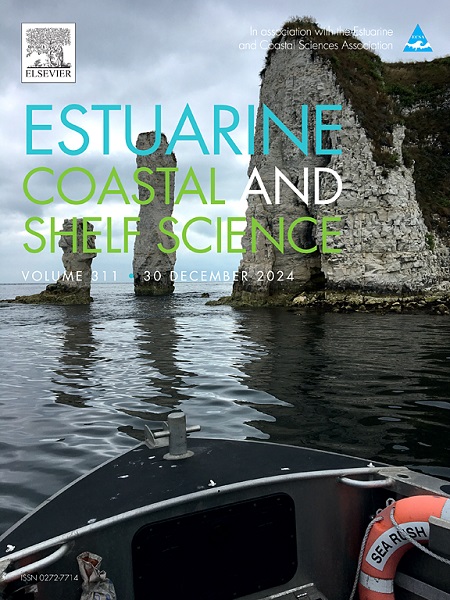Modelling the adaptation of estuarine morphology to macrobenthic bioturbation and sea level rise
IF 2.6
3区 地球科学
Q1 MARINE & FRESHWATER BIOLOGY
引用次数: 0
Abstract
Sea level rise (SLR) threatens estuaries with growing risks of flooding, erosion and loss of biodiversity. Macrobenthic bioturbators can destabilize sediments and potentially increase local erosion. Simultaneously, SLR may change macrobenthic habitat when estuarine morphology adjusts, affecting bioturbator abundance and bioturbation effects. This results in a feedback loop between changing hydrodynamics, morphology and bioturbation that to date is not well understood, but determines the long term evolution of coasts and their ecosystems in a changing climate. To shed light on these feedbacks, we use a novel eco-morphodynamic model that couples bioturbation effects with hydro-morphodynamic computations in an exploratory temperate climate estuary model. Bioturbation is hereby parameterized based on the characteristics of two macrobenthic species for which flume experiments and data on habitat preferences and abundance exist. In addition, we test whether an increase in fluvial mud supply caused by increased hinterland erosion can mitigate net estuarine erosion and habitat changes for the species. Our exploratory model shows that both SLR and bioturbation, individually and in conjunction, reduce mud content and increase estuary volume. Intertidal bed profiles become smoother through erosion of the higher elevations, which leads to larger intertidal habitat in the inner estuary. These changes result in a species-dependent response to SLR: the bioturbator that prefers sandy habitat adapts to an increasingly dynamic morphology, whereas the model species that prefers calm and muddy habitat declines. However, with increasing SLR rates, both model species decline and relative bioturbation effects reduce, leading to a morphology mainly controlled by tides. Hinterland erosion can potentially counteract drowning, but, if habitat and hence bioturbation rates are increased, this positive effect might be neutralized. Our findings show that, while bioturbation can drive estuarine response and resilience under lower rates of SLR, morphological change depends largely on the physical processes under high rates of SLR. This nonlinear modification depends on species-specific bioturbation effects, their habitat preferences, and also the number of species, which all control the vulnerability of species to SLR and hence their potential to induce morphological change.
求助全文
约1分钟内获得全文
求助全文
来源期刊
CiteScore
5.60
自引率
7.10%
发文量
374
审稿时长
9 months
期刊介绍:
Estuarine, Coastal and Shelf Science is an international multidisciplinary journal devoted to the analysis of saline water phenomena ranging from the outer edge of the continental shelf to the upper limits of the tidal zone. The journal provides a unique forum, unifying the multidisciplinary approaches to the study of the oceanography of estuaries, coastal zones, and continental shelf seas. It features original research papers, review papers and short communications treating such disciplines as zoology, botany, geology, sedimentology, physical oceanography.

 求助内容:
求助内容: 应助结果提醒方式:
应助结果提醒方式:


